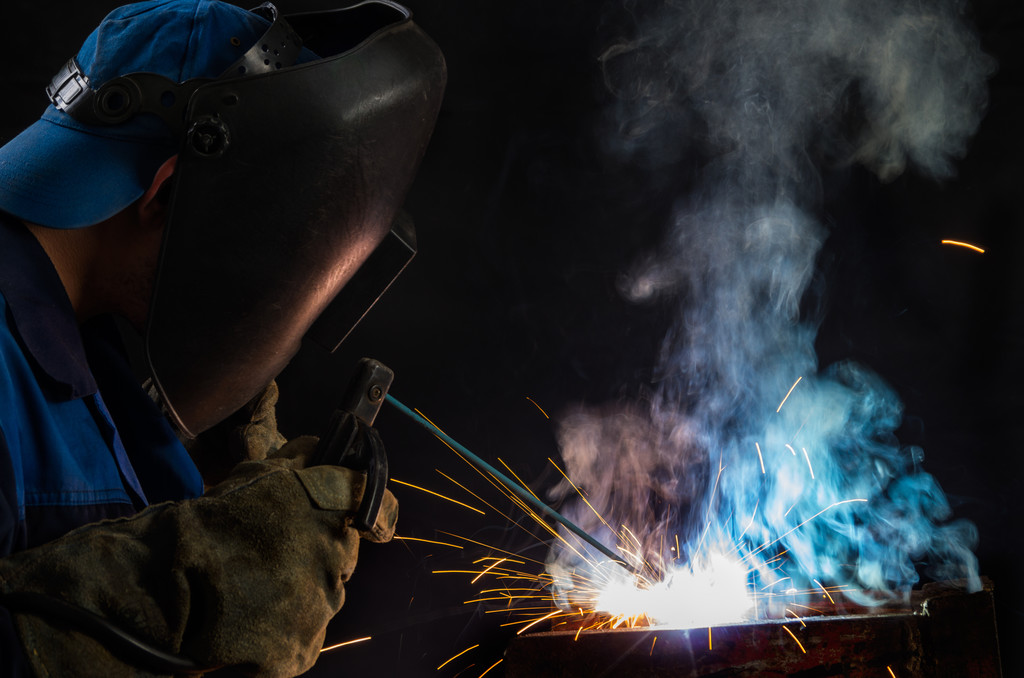Reasons for sticking electrodes during welding
 Jul 15, 2022|
Jul 15, 2022| View:331
View:331The sticking electrode is the adhesion phenomenon between the electrode and the part caused by abnormal welding of the electrode and
the part when the welder is spot welding.
There are four main reasons for sticking electrodes in the welding process: the working surfaces of the two electrodes are not parallel, the
working surfaces of the electrodes are rough, the electrode pressure is insufficient, and the water pipe at the cooling outlet of the welding
torch is reversed or the cooling water circulation is blocked.
1. The working surfaces of the two electrodes are not parallel
When the working surfaces of the two electrodes are not parallel, the working surfaces of the electrodes will partially contact the parts, the
contact resistance between the electrodes and the parts will increase, and the current of the welding circuit will decrease.
When the current is concentrated at the local contact point, and the current density of the contact point is greater than the current density of
the electrode working surface during normal welding, the temperature of the contact point rises to the weldable temperature of the electrode
and the part, and the fusion of the electrode and the part will be formed.
2. The electrode working surface is rough
The working surface of the electrode and the parts cannot be completely attached, and only some protruding parts are in contact with the parts.
This situation will also cause the working surfaces of the two electrodes to be non-parallel, resulting in the phenomenon of sticking electrodes.
3. Insufficient electrode pressure
The contact resistance is inversely proportional to the pressure. Insufficient electrode pressure causes the contact resistance between the electrode
and the part to increase, and the resistance heat of the contact part increases, so that the temperature of the contact surface between the electrode
and the part rises to the weldable temperature, thereby forming the electrode and the part fusion connection.
4. The water pipe of the cooling outlet of the welding torch is reversely connected or the cooling water circulation is blocked
The water pipe of the cooling outlet of the welding torch is reversely connected or the cooling water circulation is blocked, and the temperature
of the electrode increases, which may cause the fusion connection between the electrode and the part during continuous spot welding.

The above four situations are likely to cause the electrode and the parts to be fused and connected, resulting in the phenomenon of sticking electrodes.
So, how to avoid the occurrence of sticky electrodes?
1. Repair and file the electrode head so that the working surfaces of the two electrodes are parallel, and the surface has no rough defects. The welding
program can be selected as the grinding program (no current output), and it can be observed whether the working surfaces of the two poles are parallel
through the empty welding torch.
2. In the grinding state, the welding air is punched 5 to 10 times, and the working surfaces of the two electrodes are forged to increase the contact area
within the specified diameter of the electrode head, and at the same time improve the surface hardness.
3. Use oxyacetylene flame to heat the working surface of the electrode to form an oxide layer (oxide ridge) on the working surface of the electrode,
which can increase the melting point of the working surface of the electrode, and at the same time destroy the weldability between the electrode and
the parts.
4. Coat the working surface of the electrode with red red powder configured by the welder to destroy the weldability between the electrode and the parts.
5. Adjust the electrode pressure and use the welding parameters of high pressure, large power supply, and short power-on time.
6. Regularly clean the cooling water pipes to ensure the cooling water flow.






